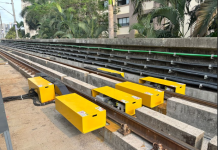Unless the domestic steel market makes an operating margin of 15– 20% in the long term, it is challenging to produce the money streams required to buy brand-new capabilities, stated T V Narendran, handling director, Tata Steel.
The business is on the other hand positive that its operations in the UK will turn favorable at an EBITDA level this , assisting success at a combined level.
“If steel need in India needs to grow to 250– 300 million tonne, then there is a great deal of financial investment that is needed,” Narendran informed ET in an interview. “It is not that the market is economically wonderful; you have less gamers due to the fact that increasingly more individuals are having a hard time to make it through in this market,” he stated.
India’s second-largest steel manufacturer taped a combined margin of 14% in the June quarter. It presently has a production capability of 21 million tonne, and has actually just recently commissioned another 5 million tonne of capability at Kalinganagar. It is intending to almost double to 40 million tonne by FY31. Around Rs 6,000-7,000 crore financial investment is required for establishing one-million-tonne capability for steel, Narendran stressed.
“It is a capital-intensive market which is really cyclical and susceptible to international costs which is why you require to take a look at the monetary health of the market,” he stated. “In India, which is a growing market for steel, it is not practically enduring, it has to do with having the money streams needed to invest and construct brand-new capabilities.”
According to Narendran, absence of healthy capital can trigger steelmakers to build up big financial obligation, eventually pressing them into monetary difficulties as seen in the past, he stated.
Over the previous couple of months, steel costs internationally have actually been affected due to extreme exports by China amidst slow domestic intake on the planet’s biggest customer of the product.
While the Indian steel market had actually appealed for a 25% secure task, the federal government revealed a 12% secure responsibility considering that April for 200 days. “What we had actually concurred with the federal government was that we need to enjoy worldwide costs and imports. I believe we are careful, and the federal government likewise has a chance to examine,” stated Narendran.
The protect task, however, assisted domestic costs enhance, and this got shown in Tata Steel’s success also, with combined margins at 14% and margins in India at 24% for the June quarter.
Considered that the development in India is moneyed by its capital which the Netherlands service is likewise self-reliant, the business’s focus will be on the UK system, which has actually been burning money for a long time now.
“UK is where we have had an issue, so, a great deal of the efforts over the last 10-15 years has actually been to attempt and repair the UK company so that it can look after itself,” Narendran stated. “Going forward with the shift that we are going through, we have actually cut the losses, and we intend to be EBITDA favorable by the end of the year,” he stated.
For the Netherlands company, Tata Steel is dealing with enhancing running margins to around 8% in the next 12-18 months from around 5% presently, stated Koushik Chatterjee, primary monetary officer. While the UK service is most likely to structurally have thin margins, it will be much better than what it is now, which will assist combined margins move more detailed to 24%.
“If we can preserve the momentum with what we have in Q1, then 14-15% (combined margins) is what you would see on an aggregate basis in this type of a market,” he stated.
“The market is now in the lower end of the mid-cycle, worldwide. At this level, what is going to bring that EBITDA is basically the manageable expense and performance,” he stated.
Tata Steel has actually prepared expense takeouts of Rs 11,500 crore this financial, of which Rs 2,900 crore was performed in the June quarter.




